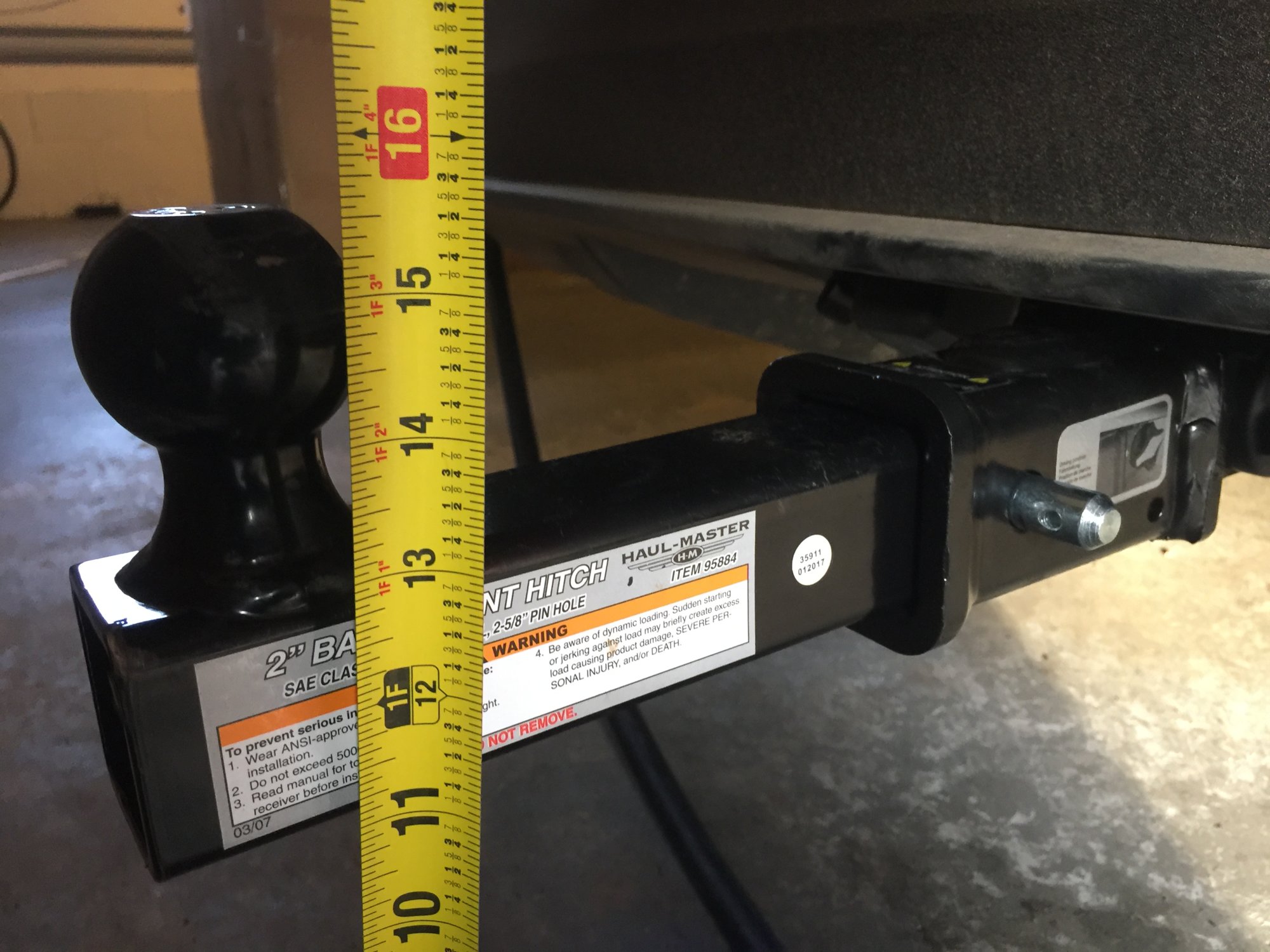I'm in the process of finding a trailer so I can tow with the Model X, this has become especially important to me as the 2nd row seats don't fold and I'm finding I need to tow more and more. Most of my towing is around town towing for utility and not for distance.
So far the hunt has been challenging due to the restrictive specs from the Bosal/Tesla combination.

While I did manage to find a straight ball mount that's less than 8" length (Harbor Freight), most are longer than 8" The 2nd issue is that the MX sits 15.5" to the top of the ball (maximum of 16.25" w/ .75" rise)

The maximum trailer coupler height (bottom of coupler) then is around 14.75" and I'm finding a lot of trailers are higher - typically around 17-20" The one I am looking at (FREE SHIPPING Ultra-Tow 4ft. x 8ft. Folding Aluminum Utility Trailer Kit 1170-Lb. Load Capacity | Trailers| Northern Tool + Equipment) is 17.8"
How is everyone making up the difference?
I started reading about adjustable couplers, but wouldn't that be the same effect as using a riser on the ball mount? The other option is to rip out the axle and replace it with a drop axle to lower the height, but I might as well built my own trailer from scratch at that point.
So far the hunt has been challenging due to the restrictive specs from the Bosal/Tesla combination.
While I did manage to find a straight ball mount that's less than 8" length (Harbor Freight), most are longer than 8" The 2nd issue is that the MX sits 15.5" to the top of the ball (maximum of 16.25" w/ .75" rise)
The maximum trailer coupler height (bottom of coupler) then is around 14.75" and I'm finding a lot of trailers are higher - typically around 17-20" The one I am looking at (FREE SHIPPING Ultra-Tow 4ft. x 8ft. Folding Aluminum Utility Trailer Kit 1170-Lb. Load Capacity | Trailers| Northern Tool + Equipment) is 17.8"
How is everyone making up the difference?
I started reading about adjustable couplers, but wouldn't that be the same effect as using a riser on the ball mount? The other option is to rip out the axle and replace it with a drop axle to lower the height, but I might as well built my own trailer from scratch at that point.


